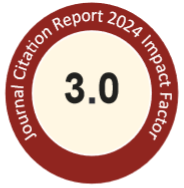Abstract
Using six kinds of extraction solvents to study the fluorescent substances in five common bean sprouts of mungbean, soybean, pea, clover and radish, we found that methanolic extraction had the highest efficiency, followed by ethanol. Among the five bean sprouts, the methanolic extract of mungbean sprouts (MEMS) had the highest fluorescence intensity, with excitation wavelength and emission wavelength of 339 and 395nm, respectively. The methanolic extract of soybean sprouts (MESS) had the second highest fluorescence intensity, with excitation wavelength and emission wavelength of 350 and 410nm. Those of fluorescent whitening agent FB351 were 238 and 435nm, respectively. The effect of light on the stability of MEMS, MESS and FB351 showed that sunlight was the most destructive followed by near ultraviolet, far ultraviolet and PL lamp, in a decreasing order. After an exposure to sunlight for 8hr, the fluorescence in tensity of the MEMS, MESS and FB351 were decreased to 27,28 and 0.8%, respectively. Incubation of MEMS, MESS and FB351 at 30°C for 144 hr decreased their fluorescence intensity to 90, 91 and 99%, respectively, while after incubation at 50°C for 144 hr the corresponding percentages were 89, 87 and 75, respectively. They were, however, quite stable when exposed in air. Under alkaline condition at pH 13, the fluorescence intensity of MEMS and MESS only 28 and 11 % of their values at pH 7, whereas the fluorescent whitening agents were not affected under such a condition. Part of the fluorescent whitening agents at pH 1, however, showed lower fluorescence intensity.
Recommended Citation
Wong, R.-G.
(1997)
"Studies on physicochemical properties of fluorescent substances in bean sprouts,"
Journal of Food and Drug Analysis: Vol. 5
:
Iss.
3
, Article 1.
Available at: https://doi.org/10.38212/2224-6614.2937

